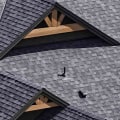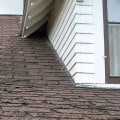When it comes to roofing, asphalt shingles are the best choice for most homes. They are relatively lightweight, inexpensive, and easy to install. Asphalt shingles come in sheets that are layered over the roof to give the impression of more expensive individual tiles, such as cedar and slate. Rolled asphalt roofs, which are used for relatively flat slopes, such as angled shed roofs, are installed by placing longitudinal strips along the roof in overlapping rows.
These roofs can be expected to last 5 to 10 years at most. Composite asphalt shingles can last 15 to 40 years, depending on the quality of materials chosen. Some tile roofs can last up to 50 years, but wooden tile roofs have an average lifespan of 25 to 30 years. Meticulously maintained, wooden tile roofs can last 50 years.
Wooden shingles are a thicker material than wooden shingles and are expected to withstand weather and UV rays better than wooden shingles. Slate is one of the most durable roofing materials, as it provides class A fire resistance and resists wind and rain very well over time. It is also resistant to mold and mildew. Slate shingles are laborious to install and require professional installation.
Metal roofs are also an option for those looking for a more aesthetic appeal. Steel, copper, aluminum, galvalume, and tin are all options for metal roofing. Wooden ceilings may also be a good option for those looking for increased aesthetic appeal. To make the most of the lifespan of any roof, simply keep it free of debris and quickly repair any punctures or damage that may occur. Please note that the increased fire risk in some regions has led to legal restrictions on the use of wooden roofing materials.
We recommend contacting a roofing professional to install metal roofs, but trying to install a self-made metal roof is definitely an option. We explain why ceilings with vertical joints are more expensive than other types of roofs and analyzed the factors that determine the cost of a vertical seam roof. It's easy to choose economical options when faced with the immediate challenge of financing a new roof when the old one runs out. Steel, copper and aluminum roofs are often made from recycled materials, which is a benefit for environmental thinkers. BUR roofs are fire resistant and economical, although the roof installation process smells bad.
They are excellent in dry, hot climates, and sometimes require additional roof maintenance to help support the weight. The National Association of Roofing Contractors (NRCA) suggests that you analyze full-size samples of the synthetic product and manufacturers' brochures before making a decision on which type of roof is best for you. Make sure you have adequate insurance and coverage to protect you from unforeseen expenses.











